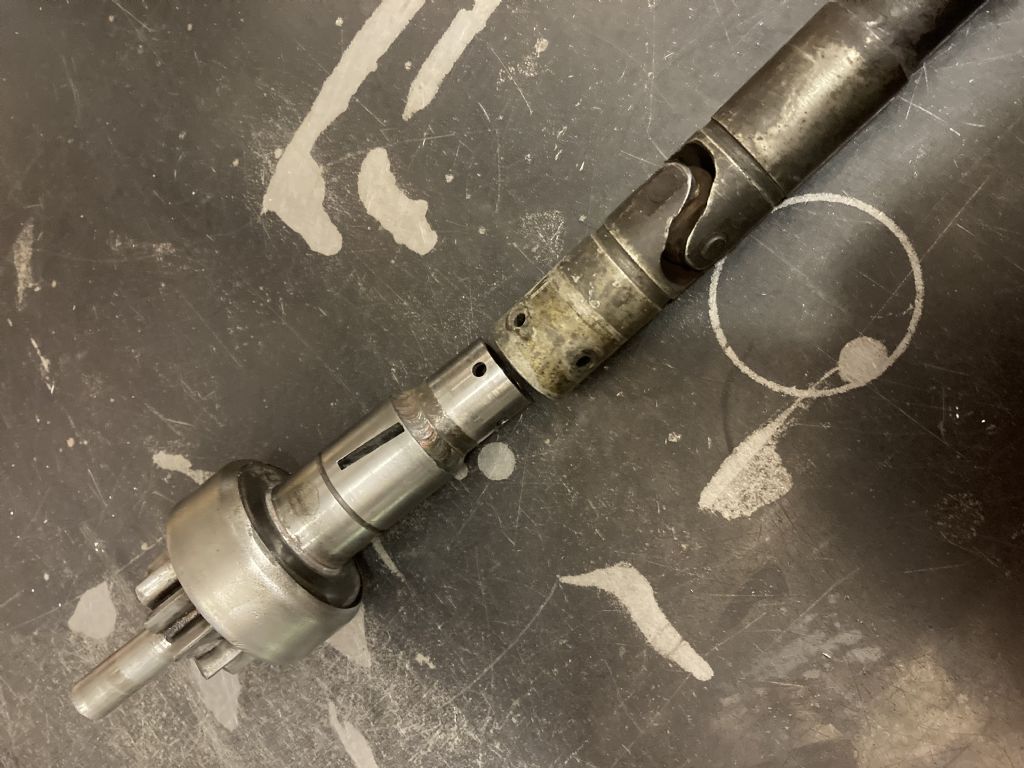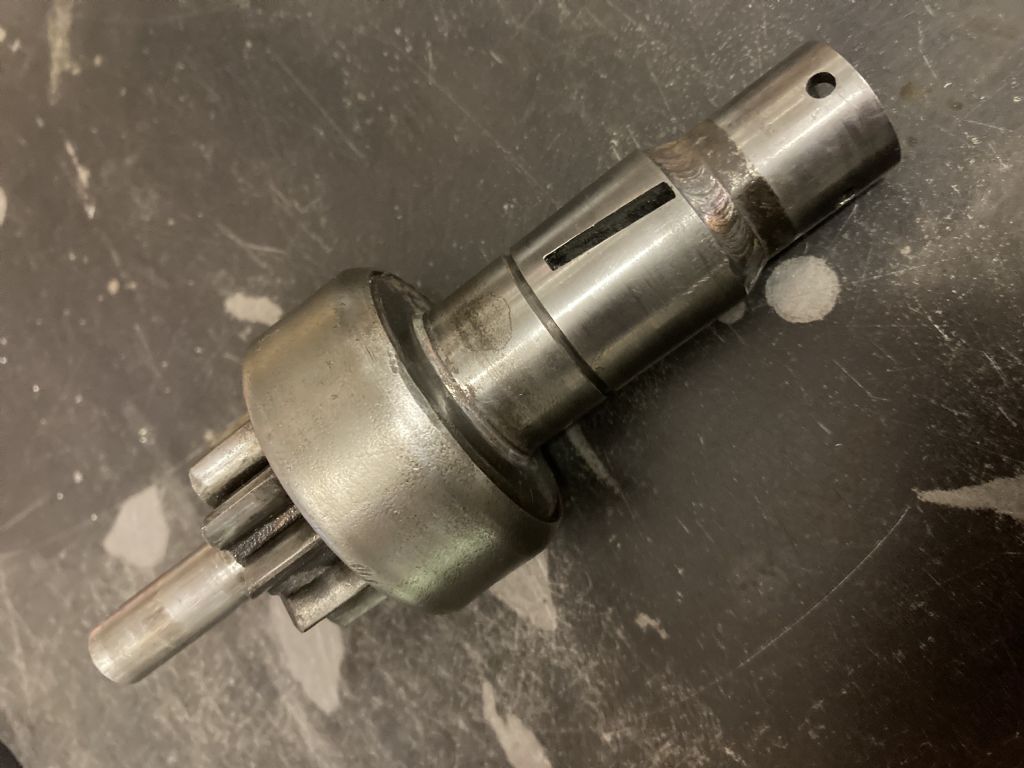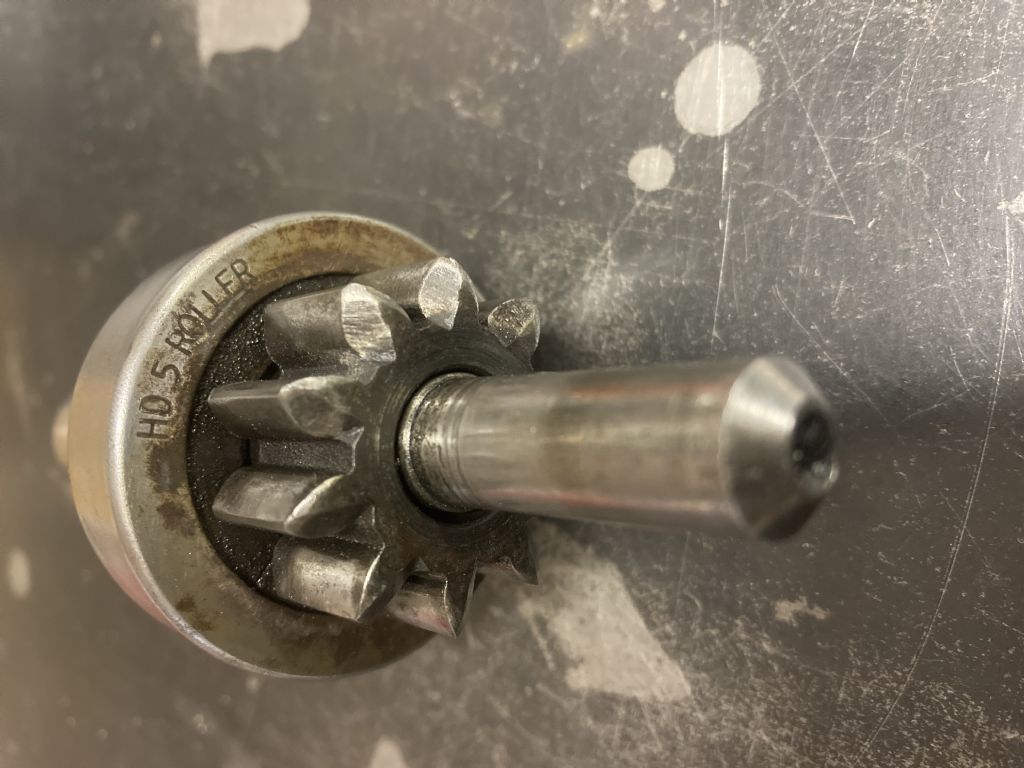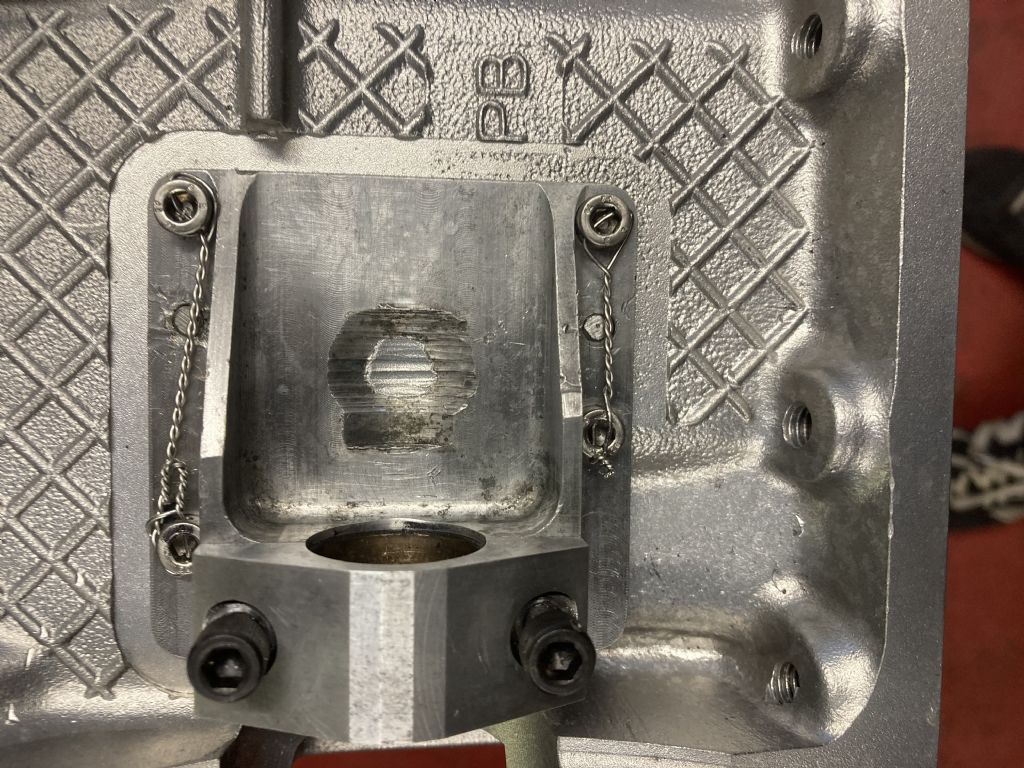Thanks for the many replies Gents!
Just to define the system a little more – The starter motor is a high performance high torque geared unit, the Bendix scroll is mounted in the end of the starter motor (just visible in the last photo looking down the block ). So, the way this operates is for the motor on energisation to push the whole of the remote shaft forwards and the pinion then engages with the ring gear and spins the engine up. The bracket shown at the front of the engine allows/supports the sprag clutch system and there is also an outer support for the pinion which fits into a bush in the bell housing. The PB bush in the housing photo below is very worn which hasn't helped the shaft alignment.
This engine is being restored after it had been 'mullered' by some unknowing mechanics when it was in Japan. The lower hook joint in the system had worn badly and damaged the bracket housing:-

The damage on the sprag support bracket caused by the lower hook joint.
The repair that had been done was that the 4 outer bolts had stripped the threads in the block and the answer they used was to put Nylok nuts on the inside of the block! (which meant the sump had to be removed to access the nuts ) not surprisingly the Nyloks (two of them ) were found lose in the sump when we stripped the engine!
We have now Helicoiled the threads and cross drilled and wirelocked the Allen screws. The dowels were also opened up to a larger size and are secured (by step drilling on the inside and by covering them with the lock wire run )
The car is a JaguarSport XJR15 road car of which only 42 were made. The engine is a 7.3litre Jaguar V12 (a stroked version of the JaguarSport XJRS 6 litre V12 ). This car was the Chassis development Prototype.
We have now identified a suitable sprag clutch arrangement which we can utilise (Reynolds Machine Tool division SO/SX series ) and we think we have found a suitable small hook joint system that has needle rollers. Available from WDS engineering supplies. But I'm still keen to find a UJ which has the ball and claw system. I am in contact with numerous ex colleagues at TWR, so I am getting assistance from their log books as well as my own, all helping to jog a 30 year old memory of these parts. The original UJ's were Dayton #20271 MTX – 5.771 DM. These we believe were American sourced and probably helicopter linkage parts.
A further part of the project is to build a replica engine based on this unit as a 'spare'.
Martin
Oily Rag.










